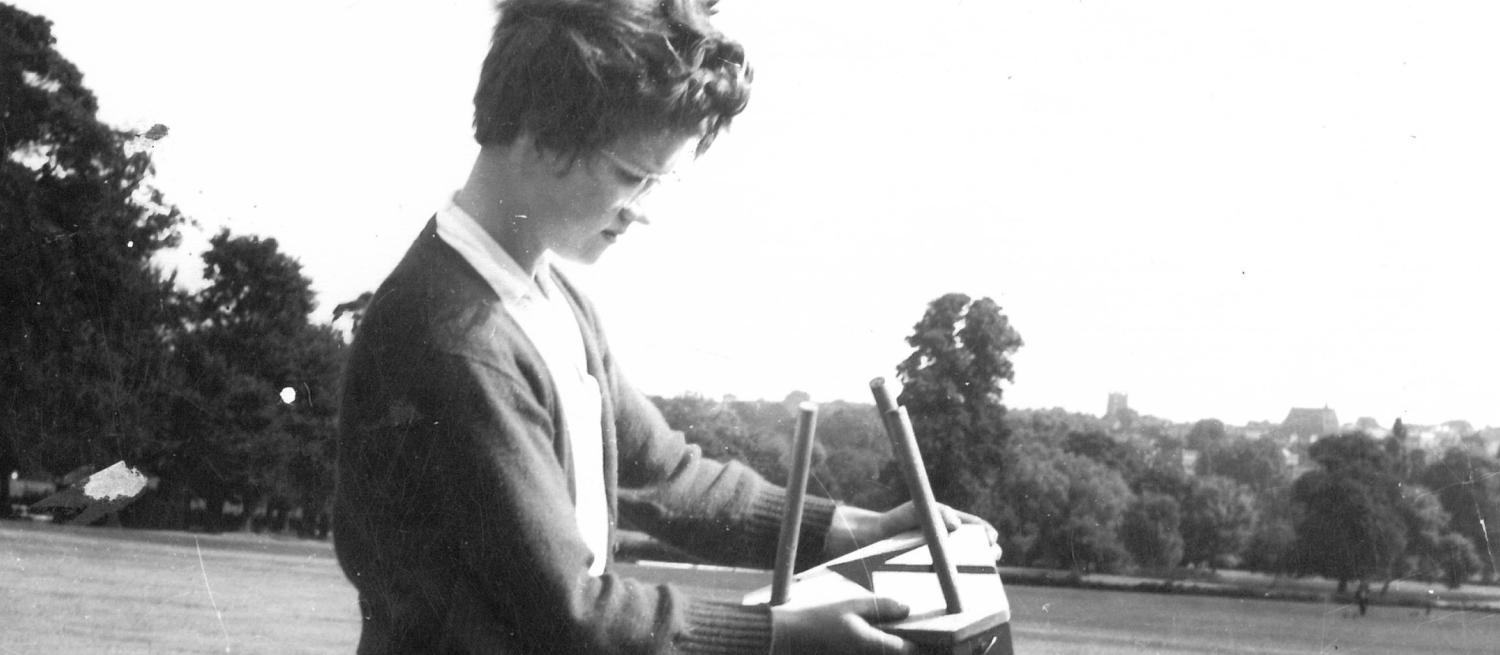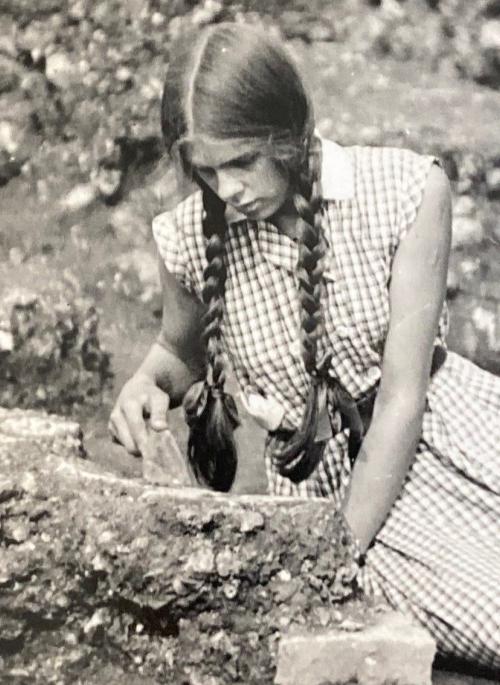None of the women I interviewed here will ever consider themselves heroic. Despite this, they are. Pursuing a career in archaeology challenges a common narrative that the past is irrelevant, does not matter and has nothing to teach us.
The lessons it could teach humanity about how we treat other human beings, our planet and its' fragile ecosystems, and for the benefit of our future lives is immeasurable. Civilisations have come and gone, climates have changed, plagues have decimated humans and animals, and entire species of human beings have vanished.
Homo sapiens is currently the only member of the genus 'Homo' still alive, and archaeology is the one subject that uniquely combines science and humanity subjects to interrogate how human beings have impacted our planet for millions of years.
Women archaeologists are a driving force all over the planet in seeking out new archaeological discoveries which change our understanding of who we are.
Long live the women archaeologists.
The archaeologists in this article live in St Albans or have excavated in St Albans or the surrounding area. Some have been lucky enough to take part in excavations at Verulamium. They have all given up their time to meet with me and help me with the research for my exhibition.
If you’d like to know EVEN more about other women archaeologists and their achievements, please head to the exhibition I have guest curated at the Verulamium Museum (link below)
Women Doing Everything, Everywhere, All at Once, 8 March – 4 July 2024
or head to www.trowelblazers.com or follow @trowelblazers , https://www.instagram.com/trowelblazers/# or trowelblazers.bsky.social .
Lexi Diggins, Archaeologist and Guest Curator, Verulamium Museum
Lexi Diggins, Archaeologist and Guest Curator
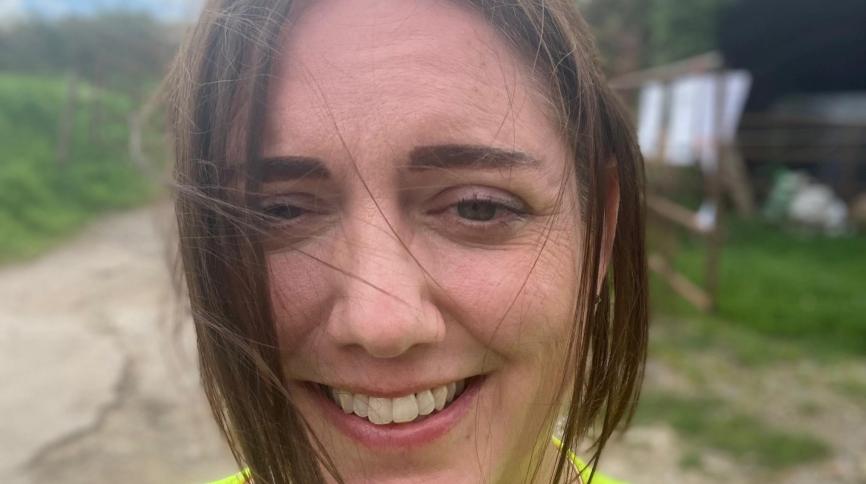
Rosalind Niblett, Archaeologist
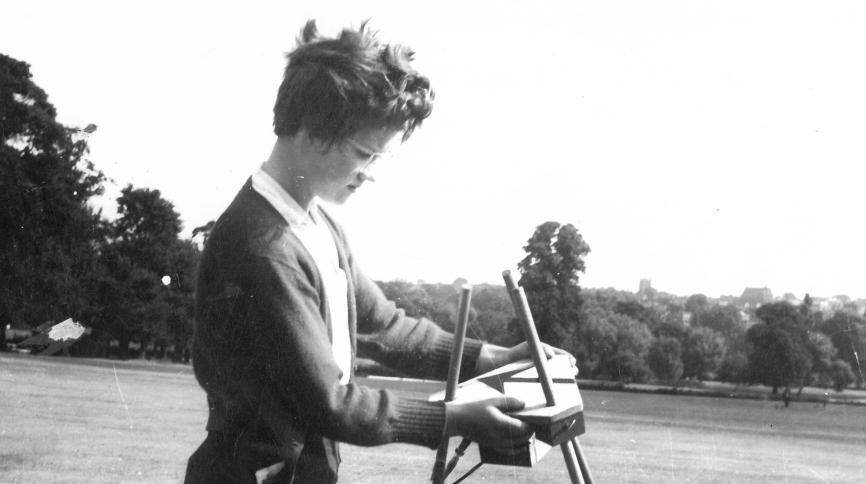
What was your career path in archaeology?
I started while still at school, volunteering on Frere's Verulamium excavations every summer from 1957 to 61. Between 1961 and 1964, I read archaeology at Cardiff University. When I graduated, I was offered funding to do a PhD, but at the same time, I was offered the post of excavation director at Colchester, which I decided to take.
I was at Colchester for six years excavating and publishing a series of papers, including for the Roman theatre at Gosbecks. As a result of my time at Colchester, I published several articles and a short book on the Trinovantes aimed at the general public.
In 1971, I was appointed county archaeologist for Bucks and was primarily involved in the archaeology of Milton Keynes, which was just beginning to be laid out.
Between 1973 and 1980, I worked part time writing up and publishing earlier excavations while looking after two young children.
In 1980, I started working part time at Verulamium Museum, looking into the Wheeler archive and helping out generally. I was able to postulate a new interpretation of the early development of Verulamium, which we were able to test by excavation In conjunction with a team of students from Cardiff University led by Bill Manning. We finally demonstrated the position and size of the pre-Flavian town.
In 1987, I was appointed full-time field archaeologist at Verulamium Museum, excavating sites of all periods, particularly in Roman and medieval towns. The most significant excavation was probably at Folly Lane and the light that the chieftain's burial throws on the Roman town's development.
In about 1997, with the implementation of PPG16 and the rise of developer-funded archaeology, I changed job title to District Archaeologist. I was based in the planning office instead of the museum.
Apart from arranging and monitoring archaeological work at development sites across the District and publishing the Folly Lane excavation, I was primarily concerned with arranging grants for producing the St Albans Archaeological Assessment and writing it in collaboration with Isobel Thompson. I have published about 50 articles/papers and six books (one jointly with Isobel), 'Alban's Buried Towns'.
Cardiff University awarded me a DLitt degree (Doctor of Letters) for work at Colchester and Verulamium. I retired in 2004, after which I spent quite a bit of time editing the Bath Archaeological Assessment for English Heritage.
Tell me about a person who has inspired or mentored you.
Probably Shepard Frere, archaeologist at Verulamium, Rex Hull (then curator at Colchester Museum) and Mortimer Wheeler.
Tell me about a dig, find, or realisation that made your heart skip a beat.
I don't know of any part 'heart stopping' moments. It was all exciting, and I think I have been fortunate. Perhaps the most important moment was back in about 1954 when I read a report in the paper about the discovery of the Temple of Mithras in London, and I decided then and there to be an archaeologist. I never changed my mind.
Dr Philippa Walton, Archaeologist and Lecturer in Roman Archaeology
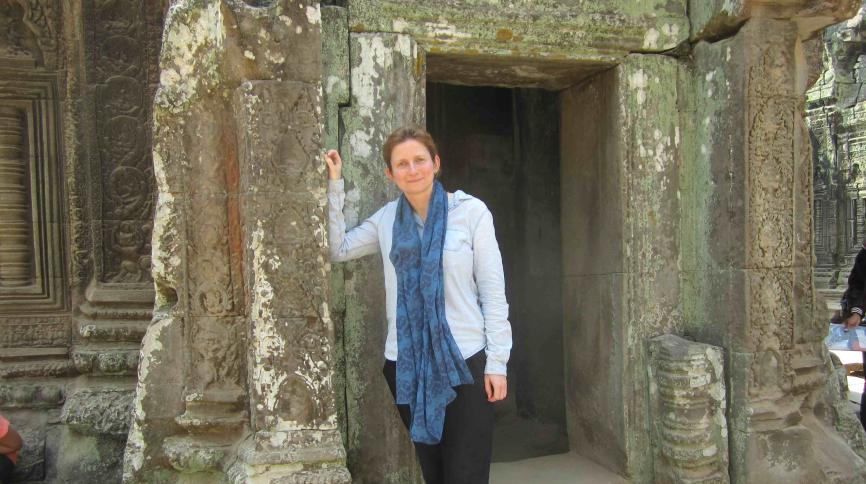
What is your connection to St Albans?
I live here.
What was your career path in archaeology?
I studied Classics at Cambridge University but realised I preferred objects to text. I'm a Lecturer in Roman Archaeology at the University of Leicester. My research focuses on the material culture of Roman Britain, with an emphasis on everyday objects recorded by the Portable Antiquities Scheme. My most recent project explored the deposition of objects in rivers throughout the Roman Empire. I was the first woman awarded the Blunt Prize for Numismatics for my research on Roman coins.
Tell me about a person who has inspired or mentored you.
I lived abroad as a child, and my grandmother sent me a stack of Roman activity books from the British Museum, which fascinated me. I went on to work at the British Museum, and the authors of those books became my colleagues!
Tell me about a dig, find, or realisation that made your heart skip a beat.
My favourite object is a small copper alloy knife handle in the shape of a human foot wearing a sock AND a sandal discovered in the River Tees in Piercebridge, Co. Durham. Providing clear evidence for this sartorial faux pas in the Roman period.
If you want to learn more about the object, take a look at the PAS record here: https://finds.org.uk/database/artefacts/record/id/71544
Dr Tess Machling, Archaeologist and Gold Torc specialist
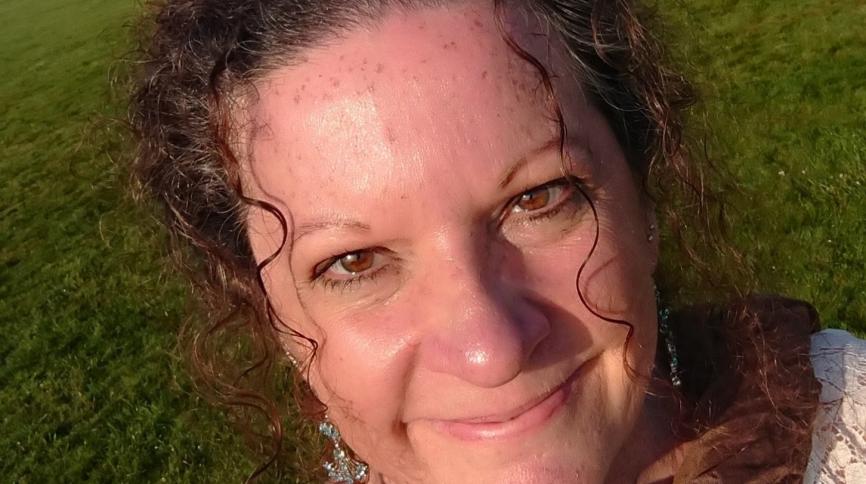
What is your connection to St Albans?
I live here.
What was your career path in archaeology?
I studied archaeology at University College London before working as a field archaeologist and pottery specialist. I then had a research project in the Caribbean and wrote my PhD thesis on 17th and 18th century Caribbean fortifications. I've been working as Membership Secretary for The Prehistoric Society since 1995. I scaled my archaeology back slightly when I had my daughter, but since 2015, I have been researching 2500 year old, Iron Age goldwork (particularly gold torc neck-rings of the kind that Boudica might have worn!) with replica maker Roll Williamson and a team of goldsmiths. We've shown that Iron Age torc neck rings are made differently from how many thought, and the work is hugely exciting. Until recently, I was the leader of the St Albans branch of the Young Archaeologists Club, and I also sometimes work in schools, telling children about archaeology.
Tell me about a person who has inspired or mentored you.
We had a lot of family visits to every castle, museum and historic venue within reach! My primary schoolteacher, Mr. Eddie Colgate, used to take us for walks around the Sussex village where I grew up. He told us about people who lived in the village in days past. I went on my first dig in Sussex when I was 13 and then went digging every school holiday and weekend I could. My first boss in the Prehistoric Society and PhD supervisor, Professor Tim Champion, has also been an ever encouraging and positive mentor, colleague and friend. Credit also needs to go to all the amazing female archaeologists and heritage specialists I have worked and become friends with over the years. There is a fabulous network of archaeological women out there!
Tell me about a dig, find, or realisation that made your heart skip a beat.
Apart from working with gold every day, I think my best archaeological moment was when I worked in the Caribbean and - using historical documents and archaeological finds - we managed to locate 30 batteries (small, sea-facing fortifications) that had been lost to coastal erosion and forgotten: I will never forget seeing the first cannon we found lying on the seabed, next to a submerged pile of rubble that used to be a fort! Amazing!
Isobel Thompson, Archaeologist and Lecturer in Archaeology, UCL
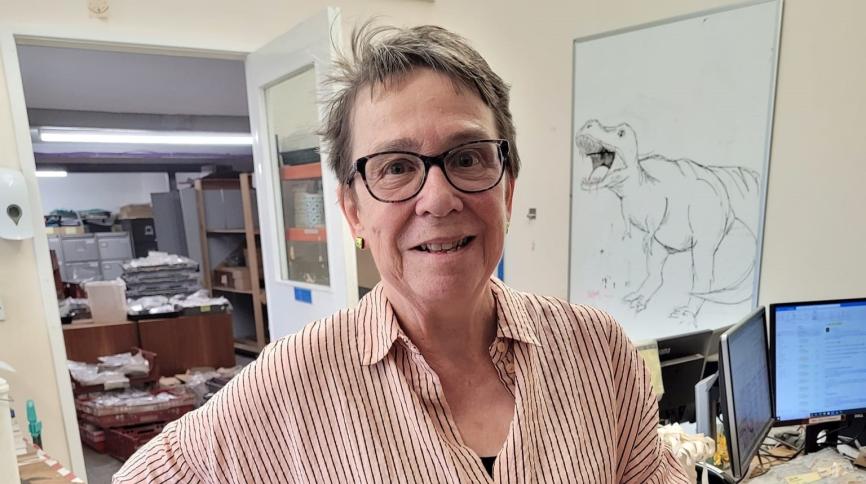
What is your connection to St Albans?
I worked here.
What was your career path in archaeology?
I did my PhD at the University of London Institute of Archaeology (published 1982 – still not superseded, not necessarily a good thing). In 1995-98, I worked under Ros Niblett compiling the St Albans Urban Archaeological Database (with our academic assessment published in 2005). 1998-2018 worked for Hertfordshire County Council's archaeology team, finishing as Historic Environment Record Officer. I am now an honorary lecturer at UCL Institute of Archaeology, editor of Hertfordshire Archaeology & History, and researching the late Iron Age-Roman transition in south-eastern Britain.
Tell me about a person who has inspired or mentored you.
Rosalind Niblett, who set me on a vital new path in 1995 at just the time when everything was beginning to be transformed by developer-led archaeology.
Tell me about a dig, find, or realisation that made your heart skip a beat.
Handling newly excavated late Iron Age cremation pots every time.
Female archaeologists at Verulamium since the 1930s:
Ruth Halliwell, Pauline Hey, Sarah Talks and Ellen Shlasko, along with other female archaeologists from UCL and Historic England– working in the Geophysical Survey Team run by Dr Kris Lockyear – 2013 to date.
Valery Rigby – ceramics expert, co-author of the King Harry Lane Cemetery Report 2011.
Birthe Kjølbye-Biddle – partnered with Martin Biddle in the Abbey Orchard excavations 1970s and 1980s, which uncovered a late Roman cemetery.
Ilid Anthony – curator and archaeologist at Verulamium Museum. She conducted several excavations 1957-68.
Molly Cotton – excavated one of the temples on the south side of the Forum, Verulamium 1949.
Audrey Williams – curator and archaeologist Verulamium Museum 1940s.
Katherine M. Richardson – excavated a building known as the 'Macellum' at Verulamium 1938.
